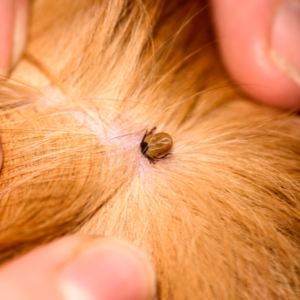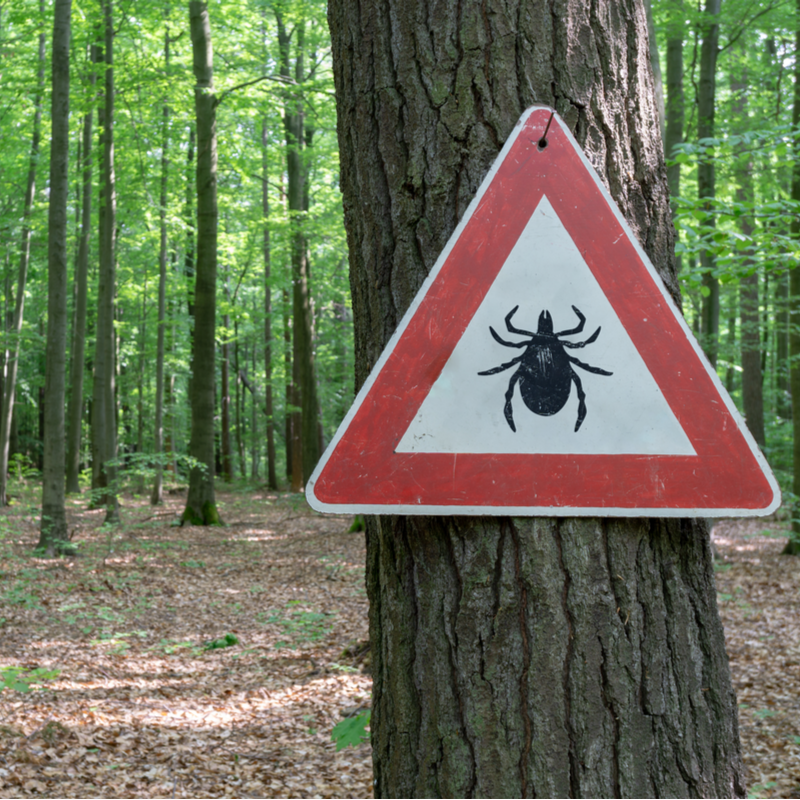Why Fleas and Ticks Are So Harmful to Our Beloved Pets
Cockroach
Here in Braselton, Georgia, we adore our pets just as much as we love our landscapes. For many of us, our dogs are part of the family, riding along in the car, going on hiking, walking, and camping trips, and splashing in around whatever water they can find. With our warm, humid climate, and average year-round temperatures above 65 degrees, our pets have plenty of opportunities to enjoy the outdoors with us. Of course, this also means we have a higher risk for fleas and ticks year-round, two insects that are not only harmful to humans but harmful to our beloved pets as well.
How to Identify Braselton Fleas and Ticks
Flea Identification

Fleas are tiny little pests that make them hard to see unless you see one on your pet. No more than 1/6 of an inch long, or 3 millimeters, they are thin, hairy, and flat and have six long legs. Wingless, their flat bodies allow for easy movement while their hair enables them to cling to their host, primarily your beloved furry friends.
Tick Identification
Ticks are flat, wingless, and oval in appearance. They come in various colors, including grayish-white, black, brown, reddish-brown, or yellowish. Once they become an adult, they are approximately the size of a pencil eraser. Adult ticks have eight legs, while their larvae only have six. Ticks can bite at all four of their active life stages: egg, larval, nymph, and adult.
How Does My Cat or Dog Get Fleas or Ticks?
Your canine or feline’s soft fur provides the perfect environment for fleas and ticks. These spiteful insects thrive where pets play in Braselton, including your backyard, the playground, and anywhere there is lots of tall grass, moisture, and shade. Both hang out in grass, shrubs, bushes, and trees. When a warm body walks by, these blood-sucking varments hitch a ride. Fleas are capable of jumping up to a foot in the air vertically to obtain access to your pet! Ticks can latch onto your beloved furball for up to five days without your dog or cat even knowing. Even indoor cats can attract and get fleas, and those who share their homes with dogs or sit by open windows may attract fleas. When a flea jumps onto your pet, it starts feeding within five minutes and may suck its blood for up to two hours. One single flea can live on your dog or cat for up to two months!
Why Are These Annoying Pests Such a Danger to Our Pets?
Danger from Fleas
Here are some of the most common reasons fleas are such a problem for our best friends:
- Flea infestations can quickly get out of control because a female flea can produce up to 2,000 eggs in one lifetime.
- Fleas can consume 15 times their body weight in blood, which can cause anemia or significant blood loss for small or young pets. Signs of anemia caused by fleas include pale gums and lack of energy.
- Some pets can develop severe allergic reactions to flea saliva called Flea Allergy Dermatitis. Symptoms include intense itching, hair loss, scabs, and red, irritated skin, leading to skin infections. The itching can last well after the fleas are gone.
- Fleas are responsible for transmitting tapeworm to pets if a flea is ingested. And let’s face it, as gross as that may sound, our dogs and cats will eat anything. The tapeworm is initially inside the flea and gets passed onto the pet when ingested. Tapeworms are parasites that cause an itchy rear end as well as weight loss. Fortunately, it’s easily treated by the veterinarian.
- Fleas lay eggs that drop out of your pet’s fur and inside your home, burying in your rug, upholstery, bedding, and furniture. Once hatched, the new fleas will seek out a new living host.
Danger from Ticks
Like humans, dogs and cats are prone to certain diseases that ticks carry. Some of these diseases only affect one or the other, and a few impact your pet in different ways. A few of these diseases are:
Lyme disease
The deer tick carries Lyme disease. Symptoms in dogs include a rash around the tick bite, fever, fatigue, and loss of appetite. Lyme disease is seen much more frequently in dogs than in our fearless felines. However, it is possible, and if a cat is infected, it can affect its kidneys, joints, and nervous system.
Rocky Mountain Spotted Fever
RMSF is commonly seen in canines. Symptoms include lethargy, stomach pain, and vomiting. It can be fatal if not treated promptly.
Ehrlichiosis
Ehrlichiosis is also seen only in dogs. Symptoms of this condition include fever, fatigue, loss of appetite, lymph node enlargement, and abnormal bruising.
Haemobartonellosis
This condition affects both dogs and cats. It targets the red blood cells leading to anemia and weakness. In cats, the condition is also known as feline infectious anemia. In dogs, the disease is not usually apparent unless the pup already has underlying issues.
Tularemia
Tularemia affects cats more than dogs giving them high fever, swollen lymph nodes, nasal discharge, and possible abscesses. Dogs can exhibit reduced appetite, depression, and a mild fever.
Cytauxzoonosis
This hard-to-pronounce condition is found only in cats. When a cat contacts cytauxzoonosis, he/she may develop anemia, depression, high fever, difficulty breathing, and jaundice. Depending on the age and health of the cat, death can occur in as short as one week. Cats that survive will be carriers of this disease for life.

Babesiosis
Tiny single-celled organisms called protozoa are transmitted by the tick setting itself and get into your animal’s red blood cells. Signs of babesiosis in dogs are typically severe, including pale gums, depression, dark-colored urine, fever, and swollen lymph nodes. In severe cases, the dog may collapse suddenly and go into shock.
Signs My Pet Has Fleas or Ticks
When it comes to fleas and ticks, you will usually see a lot of scratching. You may spot a few specks around the house, or your dog’s hair is not as thick as it used to be. Fine tooth combs made especially for dogs and cats can help you search and remove these annoying pests.
- Your pet is scratching or biting at their fur.
- Red bumps or pimples may appear on their skin.
- You can see the little buggers. They are tiny, but since they can jump, you may catch them hopping around between the fur.
- You find remnants on your pet’s skin, your carpet, your pet’s bedding, their favorite toy or chair. These specks look like bits of dried blood.
Prevention of Fleas and Ticks
There are various ways you can help prevent your best friends from getting fleas and ticks. Keeping your lawn mowed and well-manicured will help reduce the population in your backyard. Regularly inspect your canine after he/she has been outside or you’ve gone for a walk. And speak to your veterinarian to find the best, appropriate product for your pet. There are tons of effective flea and tick topical treatments, collars, and shampoos on the market. And the faster you remove a tick from your pet, the less likely they are to contract an illness.
Protect Your Pet With Flea and Tick Control With Progressive Pest Control
Progressive Pest Control offers an effective Flea, Tick, and Ant Treatment for the entire Braselton area. We apply our treatments within your structure’s interior and exterior, including up to eight feet from the base. For yard treatment, we apply a granular insecticide to the entire yard that will both eradicate and prevent fleas and ticks from destroying and invading your most important space. Learn how you can protect your pets and family now by giving us a call at 706-654-2730 or by contacting us online. For more tips and ideas regarding all things pest-related, check out our blog. Have a topic you want to see written about? Call us and let us know.

